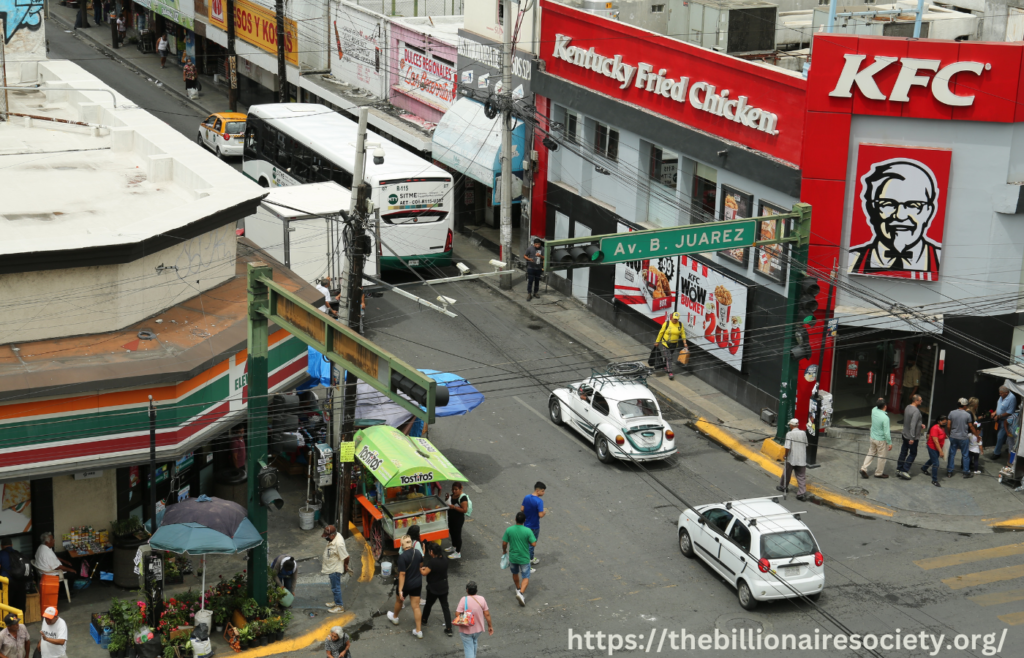Kentucky Fried Chicken, commonly known as KFC, stands as a monumental figure in the fast-food industry. From its humble beginnings in a small kitchen to its status as a global fast-food empire, KFC’s journey is a fascinating tale of innovation, perseverance, and strategic expansion. This article delves into how KFC evolved from a regional fried chicken joint into one of the world’s most recognizable fast-food brands.
Early Days and the Birth of KFC

The story of KFC begins in Corbin, Kentucky, in the 1930s. Colonel Harland Sanders, a former steamboat pilot, and gas station operator, began serving his secret recipe of fried chicken to travelers at his service station. His recipe was a blend of 11 herbs and spices, a secret that would become legendary. Sanders’ commitment to quality and taste set the foundation for what would become KFC.
In 1952, Sanders franchised his recipe to Pete Harman, a restaurant owner in Salt Lake City, Utah. This move was pivotal, as it marked the beginning of KFC’s transition from a local favorite to a national brand. Harman was instrumental in the early success of KFC, coining the name “Kentucky Fried Chicken” and helping to establish the brand’s iconic image.
National Expansion and the Birth of the KFC Brand
The success of the initial franchises led to rapid expansion. By the late 1950s, Sanders was franchising KFC aggressively across the United States. The key to this expansion was not only the quality of the chicken but also the brand’s distinctive image. Sanders, dressed in his signature white suit and black string tie, became the face of KFC, embodying the brand’s commitment to quality and authenticity.
The 1960s saw KFC’s first major growth spurt, with the opening of international locations. KFC’s first international restaurant opened in Canada in 1965, followed by the United Kingdom and Mexico. This international expansion was part of a broader strategy to globalize the brand, adapting the menu to local tastes while maintaining the core elements of the KFC experience.
Innovations and Challenges

The 1970s and 1980s were periods of significant change for KFC. In 1971, KFC was acquired by Heublein Inc., a food and beverage conglomerate, which later merged with R.J. Reynolds Industries. This acquisition allowed KFC to leverage additional resources and support for its global expansion. However, these years were not without challenges. The fast-food industry became increasingly competitive, with new entrants and changing consumer preferences.
In response to these challenges, KFC continued to innovate its menu and operations. The introduction of the “Original Recipe” chicken with a focus on quality and consistency became a cornerstone of KFC’s strategy. Additionally, KFC experimented with new menu items and marketing strategies to stay relevant and appealing to a diverse audience.
Globalization and Adaptation

The 1990s marked a new era of globalization for KFC. The brand continued to expand its presence in international markets, opening new locations in Asia, Africa, and the Middle East. KFC’s ability to adapt its menu to suit local tastes played a crucial role in its success abroad. For instance, in India, KFC introduced vegetarian options to cater to local dietary preferences, while in Japan, it offered unique items like teriyaki chicken and seasonal menu options.
During this period, KFC also focused on modernizing its image and improving its operational efficiency. The introduction of the “Fresh Baked” and “Grilled” chicken options was a response to growing health-conscious trends. These innovations helped KFC maintain its relevance in a rapidly evolving market.
Challenges and Resilience
The 2000s presented a series of challenges for KFC, including shifting consumer preferences and increased competition from other fast-food chains. The rise of health consciousness led to a demand for healthier menu options, and KFC faced scrutiny over its traditional fried chicken. To address these concerns, KFC continued to innovate, introducing grilled chicken options and emphasizing the use of high-quality ingredients.
In recent years, KFC has embraced digital transformation and technology to enhance customer experience. The implementation of online ordering systems, mobile apps, and delivery services has helped KFC stay competitive in a tech-driven market. Additionally, the brand has focused on sustainability and corporate social responsibility, including efforts to reduce its environmental impact and improve animal welfare standards.
Brand Recognition and Cultural Impact
KFC’s success can be attributed to several factors, including its distinctive branding, consistent quality, and ability to adapt to changing market conditions. Colonel Sanders’ image remains a symbol of the brand’s commitment to quality and tradition. The brand’s iconic bucket of chicken, along with its global presence, has made KFC a recognizable name around the world.
KFC’s impact extends beyond its menu and operations. The brand has become a cultural phenomenon, influencing popular culture through advertising, partnerships, and promotions. KFC’s collaborations with celebrities and its presence in various media have solidified its position as a beloved and enduring brand.
Conclusion
KFC’s journey from a small gas station eatery to a global fast-food icon is a testament to the brand’s ability to innovate, adapt, and maintain a commitment to quality. Through strategic expansion, menu innovation, and a focus on customer experience, KFC has navigated challenges and embraced opportunities to become a leading name in the fast-food industry. As the brand continues to evolve and adapt to new trends, its legacy as a symbol of delicious fried chicken and memorable dining experiences remains firmly intact.




